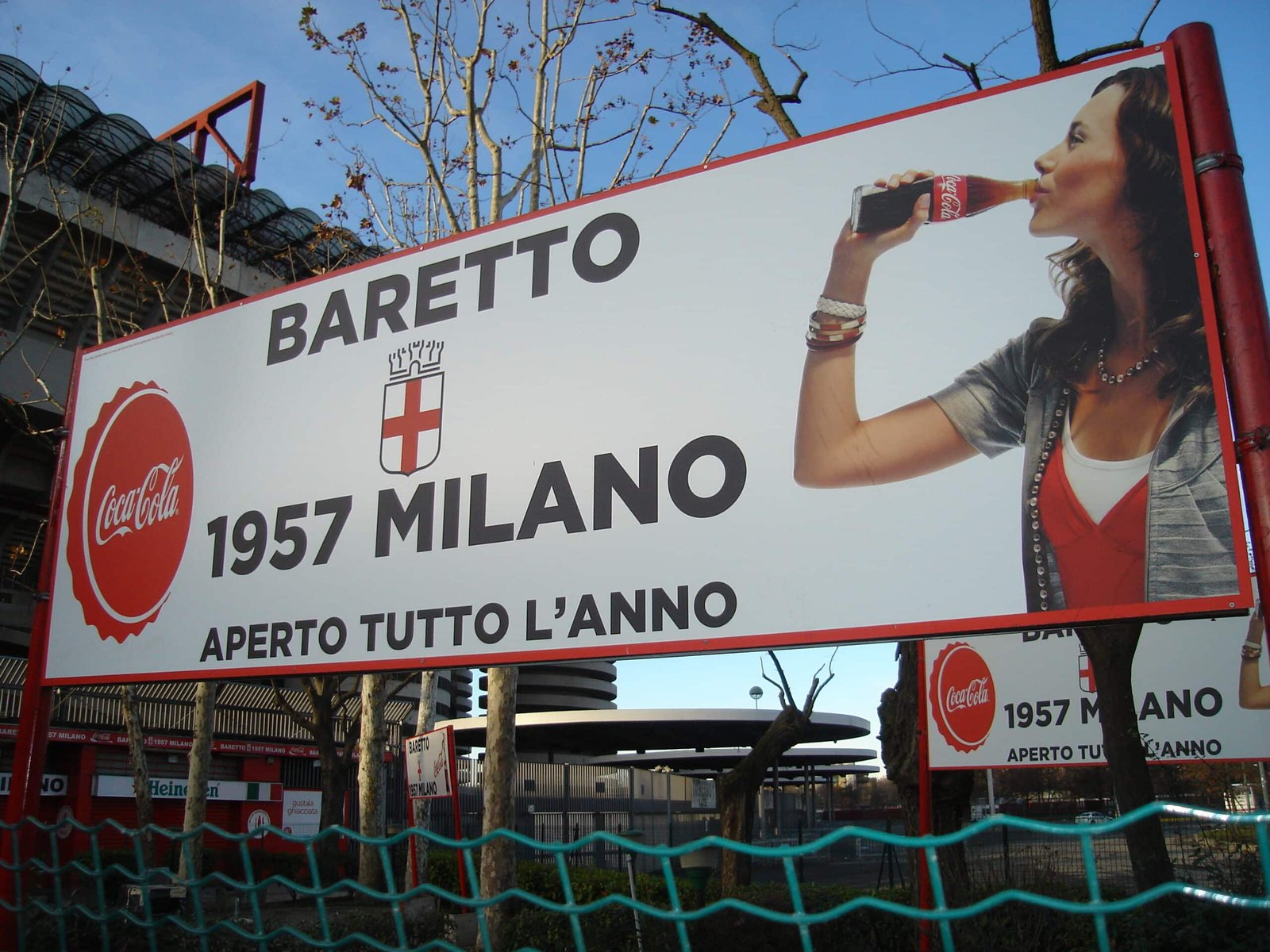Beside the sea, at a lake or by Alpine slopes, Europe has some stunning stadium sites
Everything in football is subjective, when you look at it. The team you love, the team you hate, the ground you revere, the ground you wouldn’t visit for all the Ts in Titicaca until find yourself a reluctant witness to a cup replay there on a rainy Tuesday night. Similarly, stadium locations. Lenny, the ebullient tour guide at Liverpool, lives five minutes from Anfield – for him, the best-located stadium in Europe. A Millwall fan in the Dockers Stand of the New Den might spy sunset to the west and think, ‘Ah, South Bermondsey!’ Just might, mind you.

But think of great stadium locations and you think of stands backing onto open sea or backdropped by majestic Alpine peaks. Switzerland, actually, doesn’t deliver in this regard as new-builds have been newly built near motorways not mountains. In the case of lakeside resorts Geneva and Lucerne, to travel is better than to arrive. Neuchâtel’s should be sexy but looks like what it is: a shopping centre.
Some ground rules. There’s the best part of a thousand cities in Europe, probably five times as many towns and countless villages and hamlets (Google can’t tell us). And you can bet your bottom dinar that each of these has a football pitch/ground of some kind, usually several.
Each of our suggestions below stages a decent standard of league football – or has done until relatively recently. Top-tier, third-tier, high-level semi-pro, that kind of thing. FC Gspon might play at the Ottmar Hitzfeld Stadium 2,000 metres above sea level, accessible only by two cable cars, but it’s a journey made by a gaggle of Gspon fans for home games in the Swiss Mountain League. Amazing indeed, but it’s the Alpine equivalent of Riccall United.
So… prepare your best selfie smiles and thumbs-up gestures for your next visit to:
10 BELENENSES/ESTÁDIO DO RESTELO

You’ll have to be at the top of the upper horseshoe-shaped stand – or, better yet, standing on Rua Rui Pereira right behind it but… hoo-wee! Spreading out beyond the Estádio do Restelo, beyond Europe’s most ornate monastery, beyond Belém tower forever linked with the Age of Discoveries and flanked by the graceful 25 de Abril Bridge, the broad Tagus beckons dramatically.
As for the football, after 2018-19, CF Os Belenenses, the club wearing the same Order of Christ Cross badge that was emblazoned on the billowing sails of the Portuguese explorers in the 1400s, play in the Lisbon district league. Top-flight splinter club Belenenses SAD (yup!) have moved to the Estádio Nacional, the venerable old venue surrounded by woodland.
9 ARBROATH/GAYFIELD PARK

Pictures taken on a grey February morning don’t begin to do justice to Gayfield Park, home of Arbroath FC. Or perhaps they do… for Gayfield Park, home to the Smokies since 1880, isn’t the stuff of Adriatic honeymoons. So close to the North Sea that waves spray against the East Terrace, Gayfield Park (just Gayfield to regulars) saw a criss-crossing of spectators at half-time for seasons immemorial. For decades, supporters braved the raging winds that blow in from the beach alongside. In 2002, the main stand was opened.
The rest is now standing terrace, away fans allocated the Seaforth End, hardy home supporters the Harbour End. Each section of terracing has a covering of some sort – you’ll need it if you’re getting battered by the elements in the East Terrace. What we’re dealing with here is Baltic wind chill and, of course, football history. It was here that Bon Accord were put to the sword by 36-0 in 1885, still a UK record for a senior football match.
Note the 36-0 Lounge bar by the main stand, where you can admire the Arbroath line-up on that fateful day. And with the Smokies now challenging in the Scottish Championship, fans of Dundee, Inverness Caledonian and Partick are among the visitors these days.
8 ZENIT ST PETERSBURG/PETROVSKY STADIUM
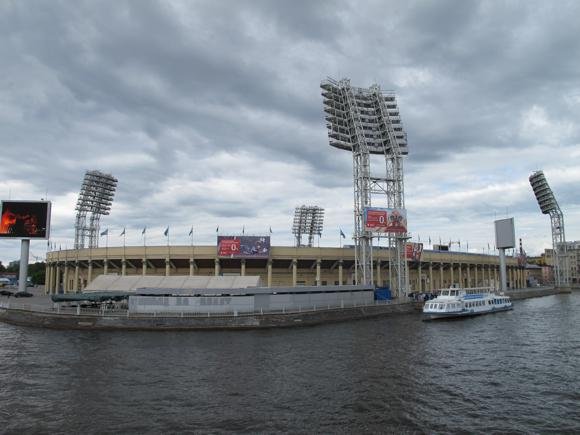
Cheating slightly, in that Zenit St Petersburg vacated the Petrovsky Stadium in 2017 but the following year, it was used by the short-lived FC Tosno for their single, and singular, top-flight campaign in the Vishaya Liga. Set on the island of the same name and surrounded on three sides by the chilly Malaya Neva – overlooked by the Peter and Paul Fortress where the city was founded in 1703 and St Petersburgers sunbathe – the Petrovsky would have hosted a European campaign in 2018-19 had Russian Cup winners Tosno not collapsed.
The original Lenin Stadium, was built shortly after the revolutionary’s death in 1924, rebuilt in the late 1950s and became home to Zenit after 1994. The 2019 Russian champions now use the 68,000-capacity Gazprom Arena (aka Krestovsky Stadium, aka Saint Petersburg Stadium), built for the 2018 World Cup.
The Petrovsky hosts summer’s Granatkin Memorial tournament for under-19s, a stage that has seen the likes of Marcel Desailly and Andreas Möller shine.
7 HNK RIJEKA/KANTRIDA
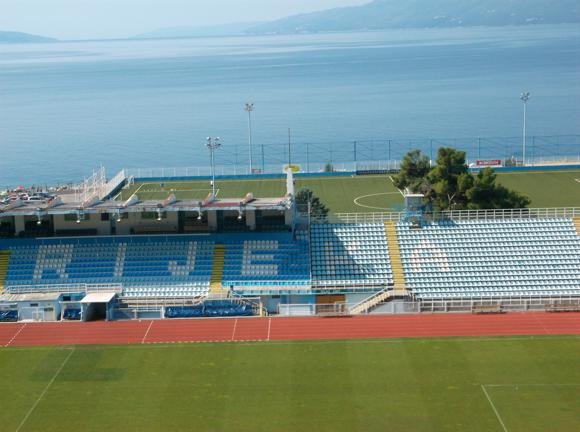
Again, bending the rules slightly as HNK Rijeka left their beloved Kantrida in 2015 for an extended stay at the Rujevica while former goalkeeper, entrepreneur and club owner Damir Mišković at last gets the new Kantrida built. In the meantime, Rijeka played a friendly here as recently as 2018, 10,000 packed into the revered ground for the visit of Maribor.
What a night that would have been, the warm sun of early September, a century of football history and the Adriatic only footsteps away – you have to skip past beach towels and loungers to get to it. Ordinarily, the Kantrida would win ‘Best Located Stadium’ hands down, but let’s see how that new version looks first.
6 FC SION/STADE DE TOURBILLON
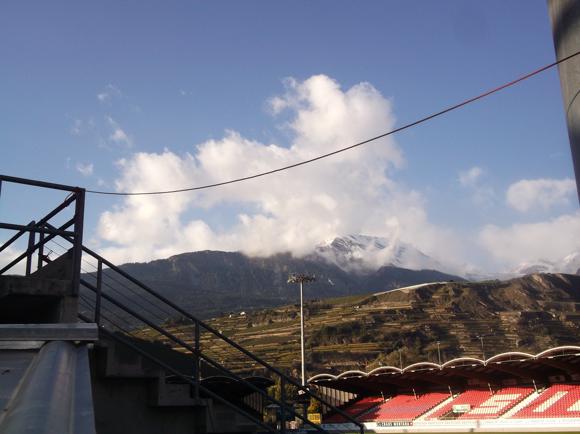
Is that the Matterhorn in the distance? Not quite, but FC Sion’s Stade de Tourbillon, in the shadow of the peaks that attract skiers to Zermatt, is probably the most chocolate boxy of all the grounds in the Swiss Super League. Even Switzerland play here sometimes, most recently in September 2019, and with its bright red seating offsetting an Alpine backdrop of sky blue and snow white, this compact ground cannot fail to impress.
Given its immediate surroundings, set between the narrow River Rhône and A9 motorway, and the controversial stewardship of FC Sion owner Christian Constantin, many a Swiss football fan might dispute such admiration. Then again, a Best Stadium Locations guide without Switzerland? Impossible! Unmöglich! Impossibile! Nunpussaivel!
5 VENEZIA FC/STADIO PIER LUIGI PENZO

Calcio by vaporetto?!? What could be better? Well…. Venezia’s Stadio Pier Luigi Penzo has definitely seen better days – this is Italy’s second oldest football stadium in continuous use, after Genoa’s. When Venezia gained promotion from Serie C in 2017, €300,000 had to be spent by the club’s American owner, Joe Tacopina, just to raise the facilities to Serie B standards. (The Lagunari nearly made it to Serie A, too, but for an own goal at Palermo in the play-offs.)
The stadium had barely changed since Tacopina’s takeover in 2015 – in fact, it had hardly changed since Venezia won the Coppa Italia in 1941, with tragic Torino stars Ezio Loik and Valentino Mazzola in the line-up. All the same, the Manhattan-based lawyer has grand plans for the flagship club of Italy’s tourist jewel. What he may not have is space –the entire district of Sant’ Elena, at the far eastern end of Venice, near the Giardini where the Biennale art fair is held, would fit inside Wembley Stadium.
Still, tatty Tribuna or not, named after a heroic airman, the Stadio Pier Luigi Penzo paints a pretty picture.
4 MOLDE FK/AKER STADION

Best admired from the Moldefjord as the Vestnes ferry glides past, the Aker Stadion is set on a graceful bend of the coast just outside Molde – and worth every krone of the 212 million that Norway’s richest fisherman, Kjelle Inge Røkke, poured into its construction in the mid-1990s. (Not all of Røkke’s football decisions have been as astute, though – this is the man pretty much responsible for moving Wimbledon to Milton Keynes.)
No doubt, though, that the ‘Røkkeløkka’ (‘Røkke Park’) is a beaut, right on the shimmering waterfront that you gaze over from the stadium café. Though famous Molde old boy Ole Gunnar Solskjaer earned his reputation at the club’s post-war Molde Idrettspark, he learned his coaching chops at the Aker Stadion. Architect Kjell Kosberg was also responsible for the stunning, sail-shaped Seilet Hotel alongside it.
3 HAJDUK SPLIT/STADION POLJUD

Hajduk fans – everyone in Dalmatia, basically – would have us strung up for not putting the Poljud top of our poll but this seashell-shaped pearl on the cusp of the Adriatic is badly showing its age. Yes, true, location, location, location, as Kirstie and Phil might say, and this Space-Age bowl designed by Boris Magaš still looks the biz as you’re driving through Kaštela into Split from the airport.
But the Poljud is set back from the Adriatic, so unless you’re in a helicopter taking photos of it or tucking into lignje na žaru on the sea-lapped terrace of the Stari Mornar restaurant a good 200 metres away, all you really appreciate up close to the Poljud is concrete and traffic. Opened in 1979 by Tito himself, whose death eight months later stopped a game between Hajduk and Red Star Belgrade and saw a spontaneous outbreak of communal weeping.
2 AS MONACO/STADE LOUIS II
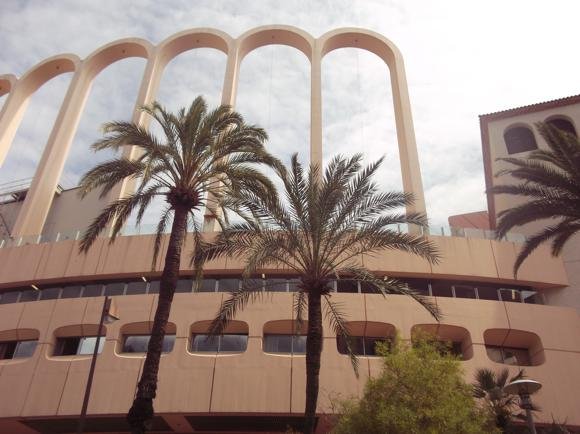
A stylish feat of engineering by the superyacht-lined Cap d’Ail harbour where Monaco meets France, the Stade Louis II is set beside the original Louis II, also named after the prince who ruled either side of World War II. It was Louis II, husband first to a cabaret singer then an actress, who introduced organised sport to the principality. The football club was formed in 1924, the Grand Prix inaugurated in 1929. Ten years afterwards, a simple, one-stand stadium was opened in the district of Fontvieille.
Creating a modern version alongside was part of a major project of land reclamation, 22 hectares in all, which expanded Fontvieille. The stadium occupies only three hectares – the central part of Trafalgar Square covers one – so architect Henri Pottier was forced to find savvy solutions to Monaco’s space problems.
Set on several storeys of car park, offices, a sports hall and Olympic-sized pool, the pitch is surrounded by roofed stands on three sides, each containing floodlights. On the open, harbour side, nine arches lend the stadium with its signature look.
Also facing the Stade Didier Deschamps, the facility-free home of US Cap d’Ail in the tier-six Ligue Méditerranée, the Louis II is best accessed and appreciated as you stroll alongside the bobbing superyachts in the harbour. Past the Riviera Marriott you reach a corner and, with the sun on your back, you take in the nine arches and the palm trees waving in the breeze below. No wonder UEFA staged all its Super Cup finals here, at the home of AS Monaco, until 2012.
1 COMO/STADIO GIUSEPPE SINIGAGLIA

Anchoring Europe’s most beautiful lake, a 10km glide from George Clooney’s Villa Oleandra on its snaking western shore, the Stadio Giuseppe Sinigaglia is aptly named after an Italian rowing hero. Benito built it – he chose the name, Sinigaglia, 1914 Henley champion and fateful volunteer for World War I, and he chose the architect, Giovanni Greppi.
Behind an equally graceful monument to the fallen of 1916, the Giuseppe Sinigaglia was built over nine months from October 1926 and opened the following July. The year, 1927, coincided with the centenary gala to honour Como-born Alessandro Volta, inventor of the electric battery, who died in 1827. Units of electricity were later named after him.

Il Duce envisaged a celebration of Italian ingenuity and craft. A lighthouse was built, villas, and telegraphers convened in congress. Most of all, though, Benito wanted a stadium.
Greppi created a classic grandstand with gracefully curved end terraces that banked high around the cycle track, as shapely as his military shrines that still dot the landscape of Lombardy.
Como spent most of the golden Serie A decade of the 1980s welcoming the likes of Maradona, Platini and Gullit to this lakeside idyll.
A rebuild in metal reshaped the Stadio from 1990 onwards – with a capacity of 6,000, the Giuseppe Sinigaglia hadn’t been used for training purposes before Italia ‘90, nor considered for the 1934 World Cup.

Today’s more prosaic Stadio Giuseppe Sinigaglia attracts some 1,500 fans for the visits of Monza and Siena in third-tier, professional Serie C. Steven Soderbergh overlooked it when filming Oceans Twelve nearby and the bar doesn’t do Nespresso.
For all that, set alongside the Como Yacht Club, the Como Flying Club and, often, a bank of swans who peck around the war memorial on non-match days, the Giuseppe Sinigaglia beats off all-comers when it comes to winning locations. So, top spot must go to Como. What else?

